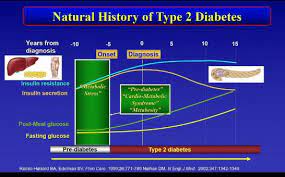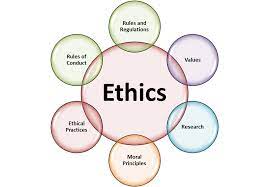Tag Archives: health care professional
History of type 2 diabetes. 2022 Best

Case 1 John is a retired 57-year-old man with a 5-year history of type 2 diabetes. He was diagnosed with diabetes in 2010 but he had symptoms indicating hyperglycemia for 2 years before diagnosis.
History of type 2 diabetes.
Category 1: Health care professional/individual as client teaching and learning: Case 1 John is a retired 57-year-old man with a 5-year history of type 2 diabetes. He was diagnosed with diabetes in 2010 but he had symptoms indicating hyperglycemia for 2 years before diagnosis. He had fasting blood glucose records indicating values of 6.6-7.1 mmol/L (118–127 mg/dl), which were described to him as indicative of “borderline diabetes.” His doctor has been encouraging to lose weight (at least 10 kg. as he currently weights 100 kg and is 180 cm tall. Write learning objectives to guide your teaching about the importance of weight loss related to type 2 diabetes.
History of type 2 diabetes.
Based on this case study, a clear, measurable objective must be written for each of the 3 domains – cognitive, affective, and psychomotor. Assignment 2 must be submitted, marked and returned to you prior to submitting assignment 3. Assignment 2 is foundational to assignment 3 so ensure you consider your tutor’s feedback. Evaluation Criteria for Assignment 2 – Writing Learning Objectives Assignment 2 should include the following: Articulate 3 objectives – one for each domain cognitive, affective, and psychomotor. Be certain each of the objectives you develop is at minimum: learner-centered discrete written in clear, measurable terms reflective of your assigned case study reasonable for a 3 minute teaching session.
History of type 2 diabetes.
Provide rationale including integration of theoretical knowledge, that is, evidence based practice to support each objective. Provide evidence of application of course concepts and references of external sources as needed to support each learner centered objective. APA format, maximum 4 pages excluding title and reference pages OR Category 2: Health care professional/family as client teaching and learning Case 2 Margaret is 87 and has dementia. Margaret’s daughter and son-in-law are at Margaret’s bedside after hip fracture surgery. Write learning objectives to guide your teaching related to fall-prevention in Health care professional https://youtu.be/BZHGmUFXjEM
History of type 2 diabetes.
Based on this case study, a clear, measurable objective must be written for each of the 3 domains – cognitive, affective, and psychomotor. Assignment 2 must be submitted, marked and returned to you prior to submitting assignment 3. Assignment 2 is foundational to assignment 3 so ensure you consider your tutor’s feedback. Evaluation Criteria for Assignment 2 – Writing Learning Objectives Assignment 2 should include the following: Articulate 3 objectives – one for each domain cognitive, affective, and psychomotor.
History of type 2 diabetes.
Be certain each of the objectives you develop is at minimum: learner-centered discrete written in clear, measurable terms reflective of your assigned case study reasonable for a 3 minute teaching session Provide rationale including integration of theoretical knowledge, that is, evidence based practice to support each objective. Provide evidence of application of course concepts and references of external sources as needed to support each learner centered objective. APA format, maximum 4 pages excluding title and reference pages
Additional Files
Applying Ethical Principles. 2022 Best

This assignment involves developing a solution to a specific ethical dilemma faced by a health care professional by applying ethical principles. Describe the issues and a possible solution in a 3-5 page paper.
Applying Ethical Principles.
Applying Ethical Principles. Develop a solution to a specific ethical dilemma faced by a health care professional by applying ethical principles. Describe the issues and a possible solution in a 3-5 page paper. Introduction Whether you are a nurse, a public health professional, a health care administrator, or in another role in the health care field, you must base your decisions on a set of ethical principles and values. Your decisions must be fair, equitable, and defensible. Each discipline has established a professional code of ethics to guide ethical behavior. In this assessment, you will practice working through an ethical dilemma as described in a case study.
Applying Ethical Principles.
Your practice will help you develop a method for formulating ethical decisions. Instructions Note: The requirements outlined below correspond to the grading criteria in the scoring guide. At a minimum, be sure to address each point. In addition, you are encouraged to review the performance-level descriptions for each criterion to see how your work will be assessed. For this assessment, develop a solution to a specific ethical dilemma faced by a health care professional.
In your assessment: Access the Ethical Case Studies media piece to review the case studies you will be using for this assessment. Select the case most closely related to your area of interest and use it to complete the assessment.
Applying Ethical Principles.
Note: The case study may not supply all of the information you need. In such cases, you should consider a variety of possibilities and infer potential conclusions. However, please be sure to identify any assumptions or speculations you make. Include the selected case study in your reference list, using proper APA style and format. Refer to the Evidence and APA section of the Writing Center for guidance. Summarize the facts in a case study and use the three components of an ethical decision-making model to analyze an ethical problem or issue and the factors that contributed to it.
Identify which case study you selected and briefly summarize the facts surrounding it. Identify the problem or issue that presents an ethical dilemma or challenge and describe that dilemma or challenge.
Applying Ethical Principles.
Identify who is involved or affected by the ethical problem or issue. Access the Ethical Decision-Making Model media piece and use the three components of the ethical decision-making model (moral awareness, moral judgment, and ethical behavior) to analyze the ethical issues. Apply the three components outlined in the Ethical Decision-Making Model media. Analyze the factors that contributed to the ethical problem or issue identified in the case study. Describe the factors that contributed to the problem or issue and explain how they contributed. Apply academic peer-reviewed journal articles relevant to an ethical problem or issue as evidence to support an analysis of the case.
Applying Ethical Principles.
In addition to the readings provided, use the Capella library to locate at least one academic peer-reviewed journal article relevant to the problem or issue that you can use to support your analysis of the situation. The NHS-FPX4000: Developing a Health Care Perspective Library Guide will help you locate appropriate references. Cite and apply key principles from the journal article as evidence to support your critical thinking and analysis of the ethical problem or issue. Review the Think Critically About Source Quality resource. Assess the credibility of the information source. Assess the relevance of the information source. Discuss the effectiveness of the communication approaches present in a case study. https://youtu.be/9mlo38gs88k






